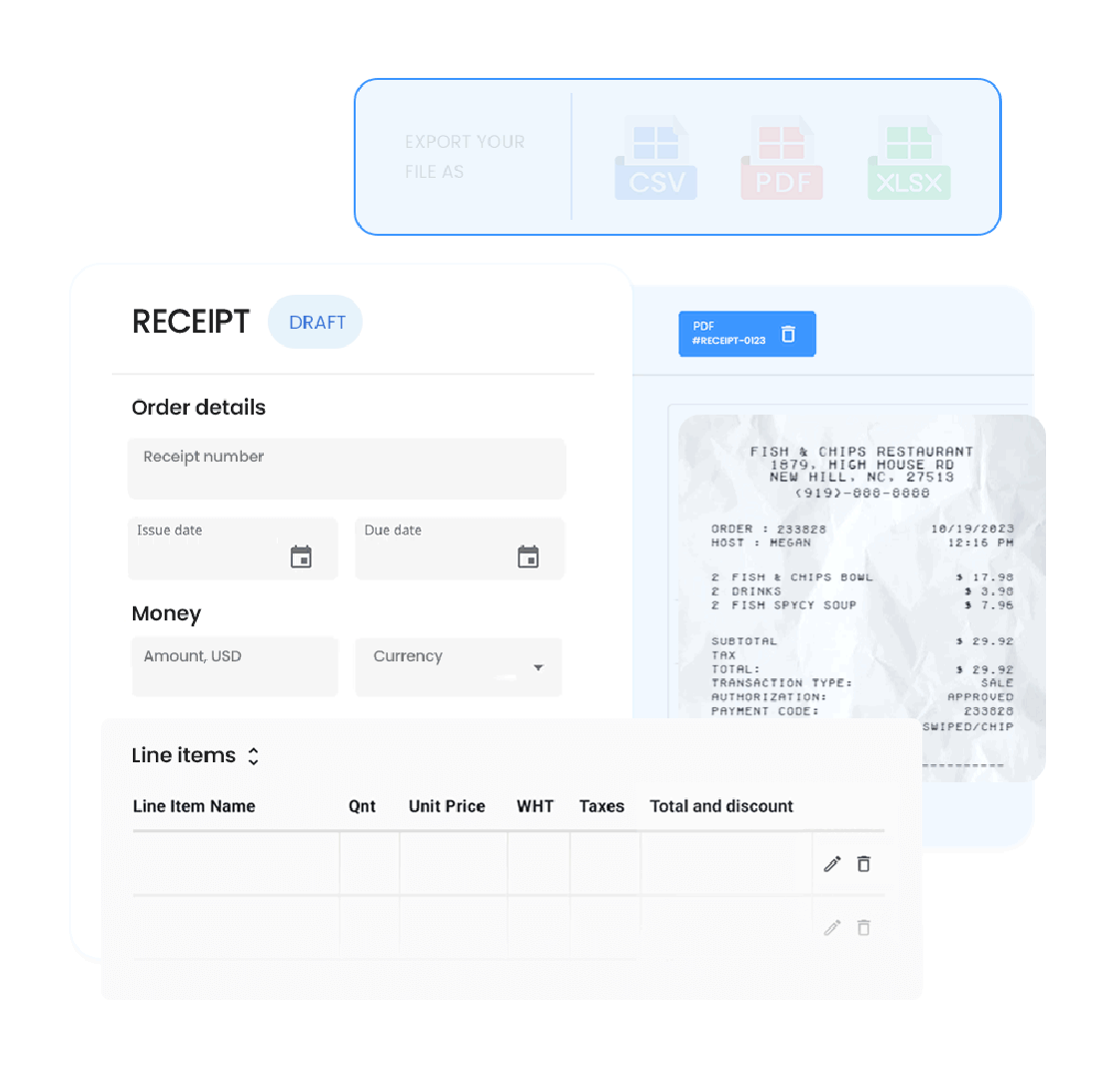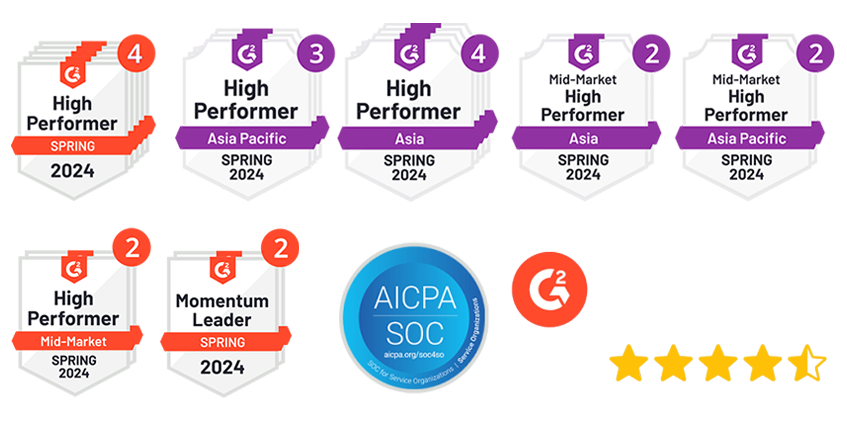Managing payments the right way is necessary for any business. Mistakes in accounts payable can lead to overpayments, delayed payments, or even fraud. If you’ve ever paid for something that wasn’t delivered or processed payments without double-checking, you understand how risky this can be. 4-Way matching is a method that helps businesses make sure they only pay for what they ordered and received, keeping payments accurate and secure.
In this blog, we’ll explain how 4-way matching works in accounts payable, how it prevents errors, and how businesses can make this process faster and more efficient. Let’s begin!
What is 4-Way Matching?
4-Way matching is a method used to ensure that a business only pays for goods or services that have been ordered, delivered, and invoiced correctly. It involves comparing four key documents before processing a payment:
- Purchase Order (PO) – The order that a company places with a supplier to purchase goods or services.
- Goods Receipt (GR) – A document confirming that the ordered goods have been delivered.
- Invoice – A bill from the supplier requesting payment for the goods or services provided.
- Payment Voucher – A document authorizing the payment after all details are verified.
Example: Let’s say your business orders 100 laptops from a supplier for $10,000. The process would look like this:
- Purchase Order: Your company sends an order to the supplier for 100 laptops.
- Goods Receipt: The supplier delivers the 100 laptops, and your team checks that everything matches the order.
- Invoice: The supplier sends an invoice for $10,000, charging you for the 100 laptops.
- Payment Voucher: The accounts payable team reviews all the documents and approves the payment because everything matches.
By comparing these four documents, you ensure that the quantity, price, and delivery all align before making the payment. This reduces the risk of mistakes, overpayments, or fraud.
How 4-Way Matching Improves Accuracy
4-Way matching helps businesses verify every payment before processing it. By comparing four key documents, Purchase Order (PO), Goods Receipt (GR), Invoice, and Payment Voucher, companies ensure they only pay for what they ordered and received. This process prevents duplicate payments, incorrect billing, and fraud.
Example: Imagine a company orders 500 office chairs from a vendor. The PO states the cost is $50,000. When the chairs arrive, the warehouse team checks the delivery and confirms that all 500 are in good condition. This is recorded in the GR. The vendor then sends an invoice, also listing 500 chairs for $50,000. Before issuing payment, the accounts payable team cross-checks all three documents. If everything matches, the Payment Voucher is approved, and the vendor gets paid.
Now, consider what happens if there’s an error. If the invoice asks for $52,000 instead of $50,000, the mismatch is flagged before payment is made. The company can correct the issue with the vendor before sending the money. This ensures payments are accurate and prevents financial losses.
This improves financial accuracy and keeps cash flow under control. By following this process, companies avoid costly mistakes and build better relationships with vendors.
The Benefits of 4-Way Matching
Managing payments can be tricky. Errors can lead to overpayments, missed deliveries, or even fraud. 4-Way matching helps businesses keep payments accurate by comparing four key documents: the purchase order, goods receipt, invoice, and payment voucher. This process ensures companies only pay for what they receive. Here’s why it matters:
1. Stops Overpayments and Fraud
Without proper checks, businesses might pay for items they never received. 4-Way matching catches these mistakes before payments go through.
Example: A company orders 500 chairs but gets only 450. The supplier still invoices for all 500. With 4-way matching, accounts payable spot the issue and adjust the payment.
2. Protects Cash Flow
Paying incorrect invoices means losing money that could be used elsewhere. 4-Way matching helps companies keep better control over their cash.
Example: A finance team mistakenly pays the same invoice twice. 4-Way matching flags the duplicate, preventing the extra payment.
3. Prevents Vendor Disputes
Errors in payments can cause disagreements with vendors. 4-Way matching ensures payments are correct, reducing conflicts and delays.
Example: A vendor claims a company hasn’t paid a late fee. With matching records, the company proves the payment was made on time and avoids the extra charge.
4. Makes Audits Easier
Financial audits require clear records. 4-Way matching keeps everything organized, making audits faster and reducing compliance risks.
Example: A business is asked to show proof of supplier payments. Since they use 4-Way matching, they have all documents ready and avoid penalties.
5. Saves Time and Reduces Errors
Manually reviewing invoices takes time and increases mistakes. Automating 4-Way matching speeds up the process and makes it more accurate.
Example: An accountant checks invoices by hand and misses a pricing error. With automated 4-way matching, the system spots the mistake instantly.
By using 4-way matching, businesses can prevent costly errors, keep payments accurate, and build stronger relationships with vendors. It’s a simple process that brings long-term savings and efficiency.
Challenges with 4-Way Matching
4-Way matching helps businesses keep payments accurate, but it is not always easy to manage. If companies rely on manual work, they may face delays and errors. Here are some common challenges businesses deal with when using 4-way matching:
1. Too Much Manual Work
Checking four different documents for every payment takes time. Finance teams must compare purchase orders, goods receipts, invoices, and payment vouchers. Without automation, this slows down payments and creates extra work.
2. Data Entry Mistakes
When employees enter data manually, they can make mistakes. Even a small typo can cause a mismatch between documents. This leads to delays, as finance teams have to find and fix errors before approving payments.
3. Systems That Don’t Work Together
Many businesses use different software for purchasing, invoicing, and accounting. If these systems don’t sync, mismatches happen. Finance teams then have to fix issues by hand, making the process even slower.
4. Unmatched Records
Sometimes, the details in the four documents do not match. A vendor might charge extra fees, or a company might receive fewer items than ordered. These mismatches must be resolved before payments can go through, leading to delays.
5. High Costs Without Automation
Without the right tools, businesses spend more time and money on processing payments. They may need extra staff to handle document matching. Late payments can also lead to fees or strained vendor relationships.
These challenges make 4-way matching difficult without automation. In the next section, we’ll explore how businesses can solve these problems with the right technology.
How Automation Can Improve the 4-Way Matching Process
Checking every invoice by hand is slow and frustrating. Mistakes happen, payments get delayed, and teams spend too much time fixing errors. 4-Way matching is supposed to prevent these problems, but manual processing can make it harder. Automation solves this by making the process faster, more accurate, and easier to manage.
1. Faster Document Matching
Finance teams waste hours comparing purchase orders, receipts, and invoices. Automation scans and matches documents in seconds. This speeds up approvals and helps businesses pay vendors on time.
2. Fewer Payment Errors
Typos, missing details, and duplicate invoices can lead to overpayments. Automated systems catch these issues before payments go through. If something doesn’t match, the system flags it for review. This helps businesses avoid costly mistakes.
3. Seamless Integration with Accounting Systems
Without automation, teams must enter the same data into different systems, increasing the risk of errors. Automated 4-Way matching connects with accounting and ERP software, keeping records accurate without extra work.
4. Stronger Fraud Protection
Fake invoices and unauthorized payments are hard to catch manually. Automation detects unusual patterns and flags suspicious activity. If a vendor tries to charge twice for the same order, the system sends an alert.
5. Time and Cost Savings
Manual processing takes up valuable employee time. Automation handles document matching, approvals, and data entry, reducing the workload. This helps businesses cut costs and allows teams to focus on more important tasks.
By automating 4-way matching, businesses can reduce risks, speed up payments, and improve financial accuracy. In the next section, we’ll see how Peakflo makes this process even easier.
How Peakflo Can Improve the 4-Way Matching Process
Peakflo makes 4-way matching faster and more accurate. It removes manual work, prevents errors, and improves financial control. Businesses can process payments with confidence, knowing every invoice is checked properly. Here’s how Peakflo helps:
1. AI-Powered PO Matching
Peakflo’s AI checks purchase orders, invoices, goods receipts, and payment vouchers. It quickly spots mismatches and flags errors before payments are made. This prevents overpayments and saves businesses from making financial mistakes.

2. Automated Bill Capture & Smart Approvals
Peakflo’s AI-powered invoice capture reads invoice details and records them instantly. This reduces errors from manual data entry. Smart approval workflows ensure that invoices go to the right people based on set rules. Businesses can process payments faster while keeping everything in check.

3. Vendor Portal for Seamless Collaboration
Vendors can upload invoices, track payment progress, and fix issues in one place. This reduces email exchanges and speeds up approvals. Clear communication improves trust between businesses and vendors.

4. End-to-End Accounts Payable Automation
Peakflo automates every step, from capturing invoices to approving payments. It helps businesses cut costs, reduce delays, and maintain accurate records. Teams can focus on bigger financial goals.
Conclusion
Managing accounts payable manually can lead to late payments, duplicate charges, and missing invoices. These mistakes slow down business operations and create cash flow problems. 4-Way matching helps catch errors, but doing it manually takes too much time. Peakflo automates this process by matching invoices, purchase orders, and receipts instantly. It flags issues, speeds up approvals, and updates vendors on payment status. This reduces delays, improves accuracy, and keeps vendors happy. Stop wasting time on manual processes—book a demo with Peakflo today!










![Why AI Sales Calls Are Making Good Sales Reps Even Better [2025 Guide] ai sales calls](https://blog.peakflo.co/wp-content/uploads/2025/09/65168cf6-3001-4733-8cbc-12d5684cf449-218x150.webp)


































